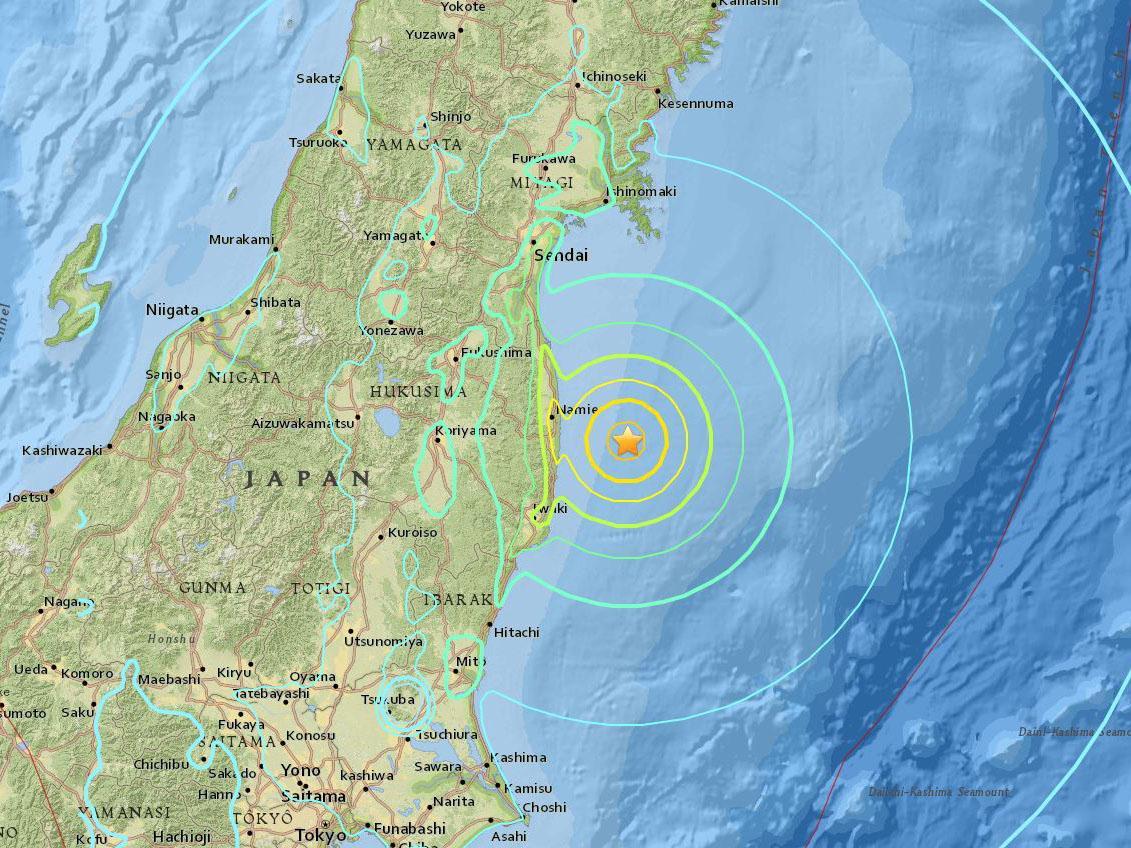
US Geological survey image showing the epicentre of the 6.9 magnitude earthquake south east of Fukushima
US Geological Survey
According to the Japan Meteorological Agency, the earthquake that struck Monday off Fukushima was an aftershock of the magnitude 9.0 quake that hit in 2011 and caused a deadly tsunami in the same area. Those events were responsible for more than 15,900 deaths and 2,600 missing persons as well as physical infrastructure damages exceeding $200 billion. The earthquake and tsunami also initiated a severe nuclear accident at the Fukushima Daiichi Nuclear Power Station. Three of the six reactors at the plant sustained severe core damage and released hydrogen and radioactive materials. The explosion of the released hydrogen damaged three reactor buildings and impeded onsite emergency response efforts. Five years later, the region is still recovering from the social and economic impacts of the accident.
The publications below address preparedness and response for crisis situations like the 2011 disaster. All are free to download.
Lessons Learned from the Fukushima Nuclear Accident for Improving Safety of U.S. Nuclear Plants
The March 11, 2011, Great East Japan Earthquake and tsunami sparked a humanitarian disaster in northeastern Japan. They were responsible for more than 15,900 deaths and 2,600 missing persons as well as physical infrastructure damages exceeding …
The U.S. Congress asked the National Academy of Sciences to conduct a technical study on lessons learned from the Fukushima Daiichi nuclear accident for improving safety and security of commercial nuclear power plants in the United States. This …
Many coastal areas of the United States are at risk for tsunamis. After the catastrophic 2004 tsunami in the Indian Ocean, legislation was passed to expand U.S. tsunami warning capabilities. Since then, the nation has made progress in several …
National Earthquake Resilience: Research, Implementation, and Outreach
The United States will certainly be subject to damaging earthquakes in the future. Some of these earthquakes will occur in highly populated and vulnerable areas. Coping with moderate earthquakes is not a reliable indicator of preparedness for a …
Catastrophic disasters occurring in 2011 in the United States and worldwide–from the tornado in Joplin, Missouri, to the earthquake and tsunami in Japan, to the earthquake in New Zealand–have demonstrated that even prepared communities can be …
In the devastation that follows a major disaster, there is a need for multiple sectors to unite and devote new resources to support the rebuilding of infrastructure, the provision of health and social services, the restoration of care delivery …





